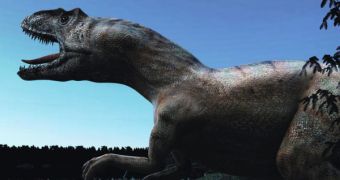New scientific analyses concluded that polar dinosaurs didn't in fact travel that long of a distance during their biannual migration, as previously thought. Anthropologists found out that the power requirements such a trip would have had on a 3-ton dinosaur would simply have been too great to be sustained over the course of six months or more of continuous movement.
Apparently, the longest distance migrating polar dinosaurs would have been able to travel in 6 months is about 3000 kilometers (1860 miles). The fact that several bone beds containing numerous fossils have been discovered huge distances from each other got the researchers conducting the new study a bit confused at first. Normally, such a discovery would mean that dinosaurs actually did travel long miles twice a year.
But archaeologists believe that the scattering of the fossil sites could mean that not all dinosaurs were heading towards the same fixed location during their migration. This could also explain why several species remained at the poles even during winter and never moved on. A deep symbiotic relationship with their environment could have caused those species to adapt to the chilly temperatures, much in the way polar bear and walruses adapted to subzero sea water temperatures in modern times.
The team of scientists conducting the study, led by Phil Bell and Eric Snively, at the University of Alberta, says that migration was crucial for all dinosaurs, but especially for herbivorous ones, which needed to eat substantial quantities of leaves in order to sustain their large bodies. It would make sense that a heard of such plant-eating giants would have quickly depleted the vegetation in a confined area, maybe within a matter of days.
That's why their migration routes ranged from the Equator to the poles. Naturally, predators would also follow the game they hunted, otherwise they would have starved to death. The issue of dinosaur migration ranges still remains opened, with strong arguments being thrown in the debate from all sides. Further digs could help shed some light on this mystery.

 14 DAY TRIAL //
14 DAY TRIAL //